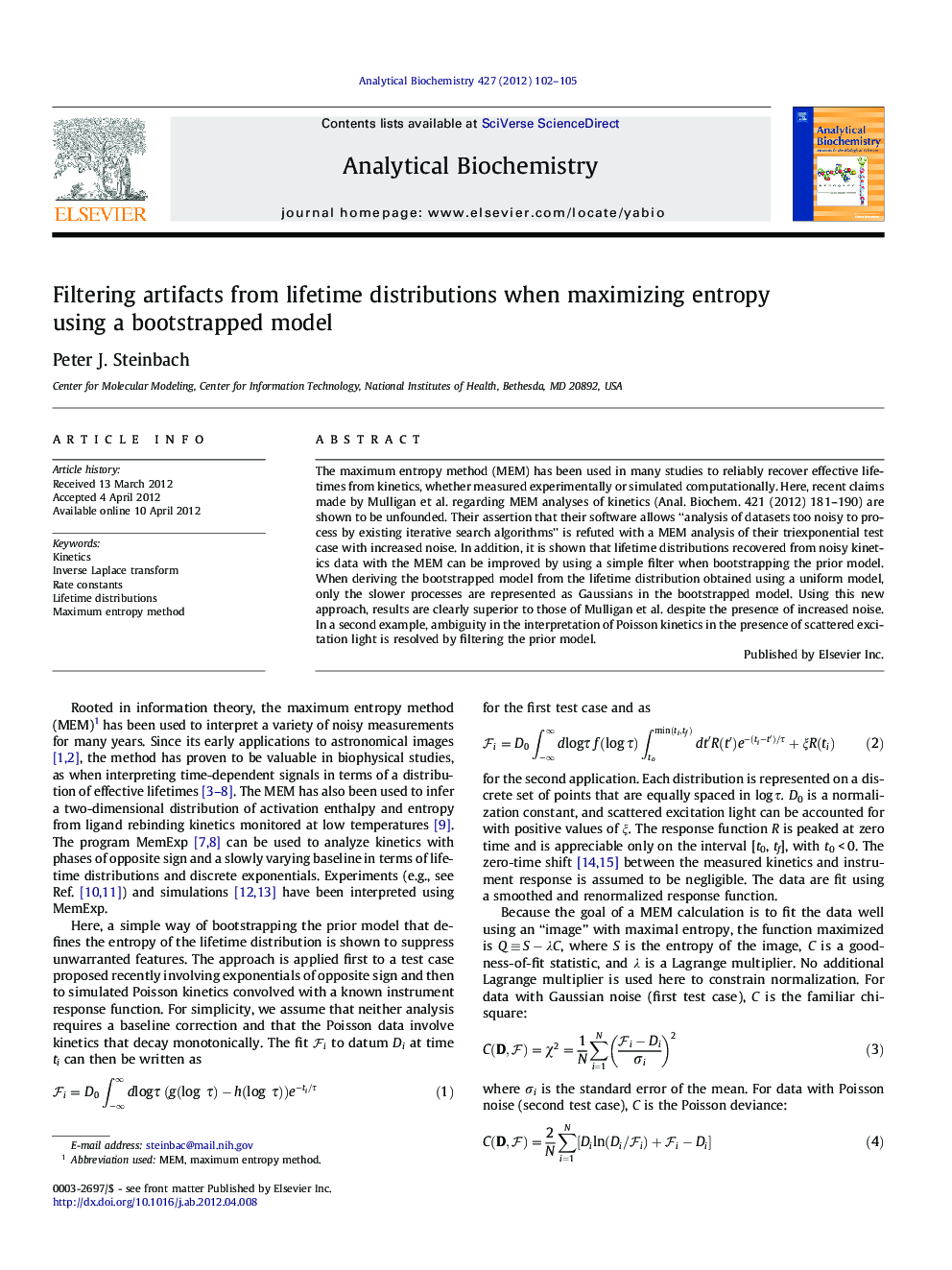| Article ID | Journal | Published Year | Pages | File Type |
|---|---|---|---|---|
| 10532791 | Analytical Biochemistry | 2012 | 4 Pages |
Abstract
The maximum entropy method (MEM) has been used in many studies to reliably recover effective lifetimes from kinetics, whether measured experimentally or simulated computationally. Here, recent claims made by Mulligan et al. regarding MEM analyses of kinetics (Anal. Biochem. 421 (2012) 181-190) are shown to be unfounded. Their assertion that their software allows “analysis of datasets too noisy to process by existing iterative search algorithms” is refuted with a MEM analysis of their triexponential test case with increased noise. In addition, it is shown that lifetime distributions recovered from noisy kinetics data with the MEM can be improved by using a simple filter when bootstrapping the prior model. When deriving the bootstrapped model from the lifetime distribution obtained using a uniform model, only the slower processes are represented as Gaussians in the bootstrapped model. Using this new approach, results are clearly superior to those of Mulligan et al. despite the presence of increased noise. In a second example, ambiguity in the interpretation of Poisson kinetics in the presence of scattered excitation light is resolved by filtering the prior model.
Keywords
Related Topics
Physical Sciences and Engineering
Chemistry
Analytical Chemistry
Authors
Peter J. Steinbach,
